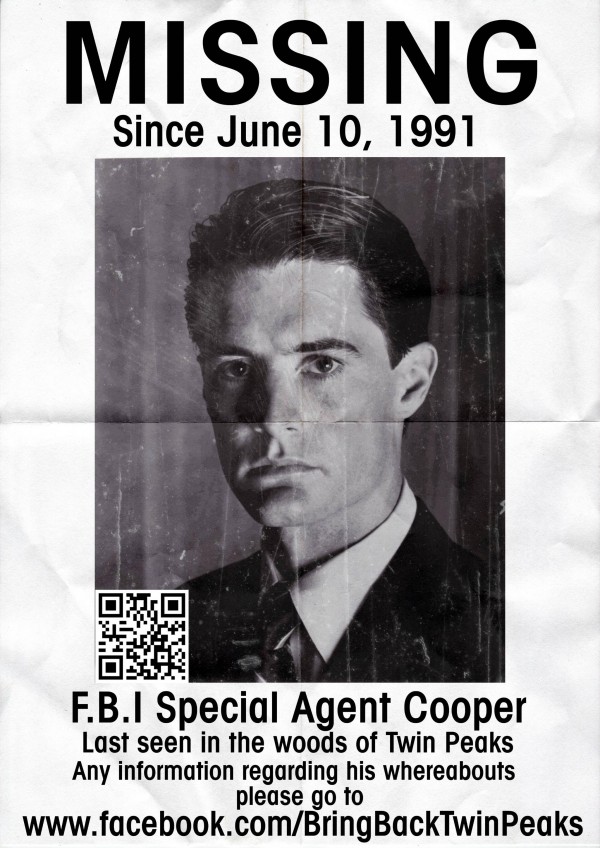EDITOR’S NOTE: This originally posted on September 23rd, 2011.
![]() BY MIKE WALSH Like millions of Americans, I was fanatical about Twin Peaks when the show originally aired on ABC in 1990. I rearranged my schedule, so I could be home to watch it. I recorded it on VHS tape when I couldn’t. I debated the identity of Laura Palmer’s murderer with friends and strangers. I had dreams about Bob, the malevolent demon that haunts the show.
BY MIKE WALSH Like millions of Americans, I was fanatical about Twin Peaks when the show originally aired on ABC in 1990. I rearranged my schedule, so I could be home to watch it. I recorded it on VHS tape when I couldn’t. I debated the identity of Laura Palmer’s murderer with friends and strangers. I had dreams about Bob, the malevolent demon that haunts the show.
So when Netflix made Twin Peaks available for streaming recently, I immediately added it to my queue. I started watching in August and every night I came home from work looking forward to another 45-minute episode. It took me until Labor Day to finish all 30 episodes of the two seasons. When it was over, I went through some serious withdrawal. But a day or two later I remembered that there was a movie follow-up, Fire Walk with Me, so I got a copy from a library and watched that too.
Twin Peaks was the brainchild of David Lynch, whom Mel Brooks once aptly described as “Jimmy Stewart from Mars,” and TV producer/writer Mark Frost. The idea started with a suggestion by Lynch’s agent that he direct a TV movie about Marilyn Monroe and somehow that evolved into a surrealistic murder mystery about a dead prom queen set in the seedy underside of small town American life where virtually everyone has a secret, is involved in some kind of nefarious plot, is having an affair, or is just plain nuts. It’s very similar to themes Lynch explored in the highly acclaimed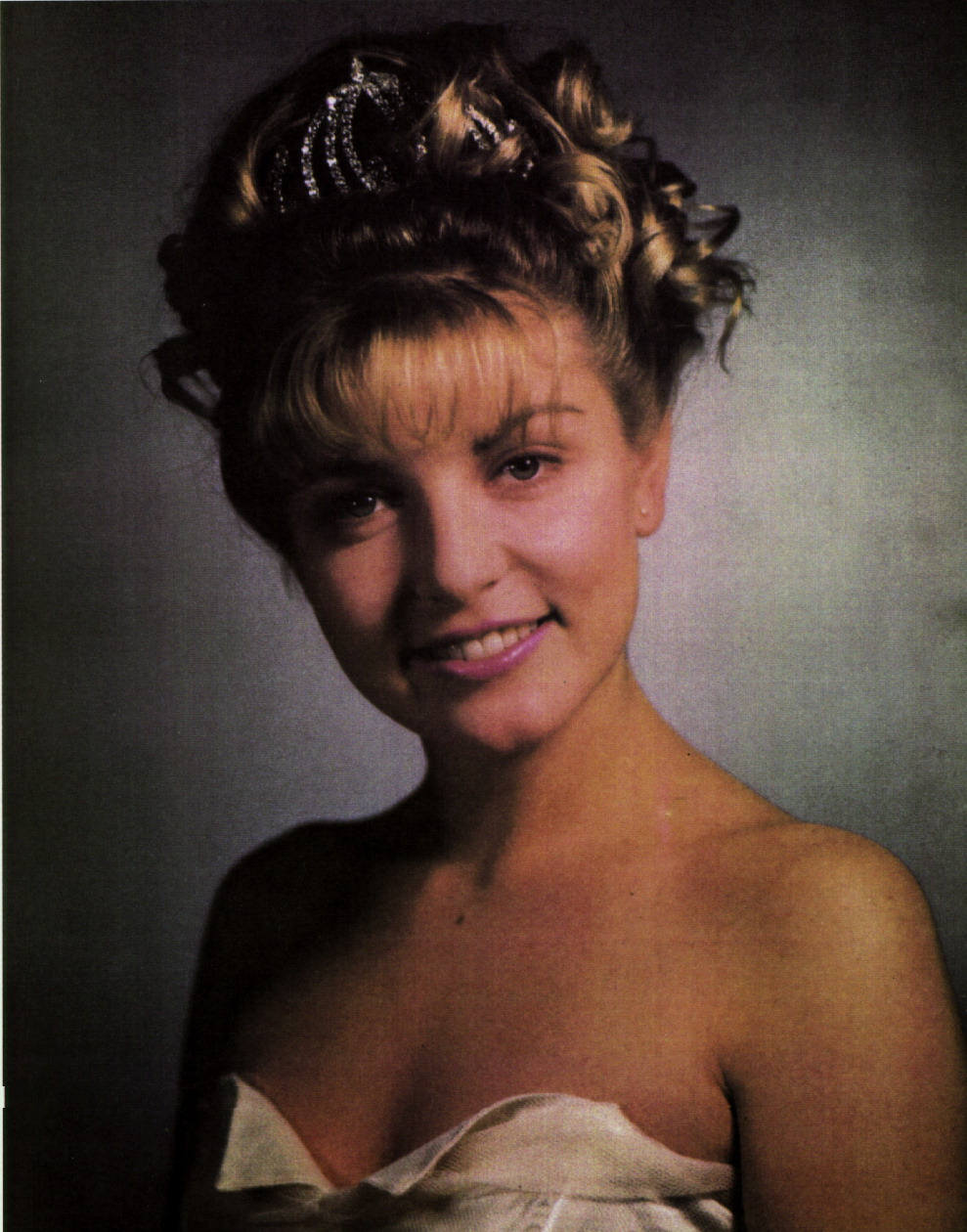 and controversial 1986 film Blue Velvet, which also starred Kyle Maclachlan, and earned Lynch an Academy Award nomination for best director.
and controversial 1986 film Blue Velvet, which also starred Kyle Maclachlan, and earned Lynch an Academy Award nomination for best director.
From the beautifully-lensed opening credit sequence of the pilot and the infamous line delivered by Eraserhead star Jack Nance (“She’s dead, wrapped in plastic”) to the middle of the 2nd season when the murder is solved, pretty much everything about Twin Peaks is perfect. And shockingly enough, it found a mass audience in primetime. American TV viewers were enthralled by the unprecedented blend of horror, mystery, soap opera, screwball humor, industrial-strength surrealism, and enigma-wrapped-in-a-riddle plot twists — providing proof to the network suits that there was an audience for shows that were smart, risky, even bizarre. Viewers back then wanted more than just the same old cop and lawyer shows that dominated the TV schedule. Re-watching the show, my first reaction was astonishment that such a show actually ran on network television–in primetime! Nothing like it had ever appeared on TV before or since.
The star of Twin Peaks is MacLachlan as Agent Cooper, the smart, funny, sentimental FBI agent with an irrepressibly pleasant attitude, jet black Vitalis-ed hair, impeccable suits, and ramrod posture. He’s also morally upstanding, fending off the bold flirtations of the sexy Audrey Horne, a high school senior. Never fearful, Cooper gives the viewer hope that the good guys will prevail despite the horror and evil lurking in the dark recesses of Rockwellian Americana.
Cooper frequently dictates his thoughts and observations about the case into a recording device, always addressing a never-seen assistant named Diane. Cooper pursues the elusive identity of Laura Palmer’s killer in real life and his dream life. And what dreams Cooper has! Most of them are set in a mysterious place referred to as the Black Lodge, a netherworld of dancing midgets who talk backwards, dead people, red velvet drapes and wildly patterned floors.
Despite the murder investigation and a pervasive atmosphere of dread, Twin Peaks is thick with Lynch-ian wackiness and small town oddness. Here’s a few of the kookier tidbits:
— Characters who extract an almost sexual pleasure from their near-constant consumption of pie, donuts, and coffee
— A young man in the Indian headdress inexplicably bangs his head against a dollhouse.
— A cop who weeps at crime scenes
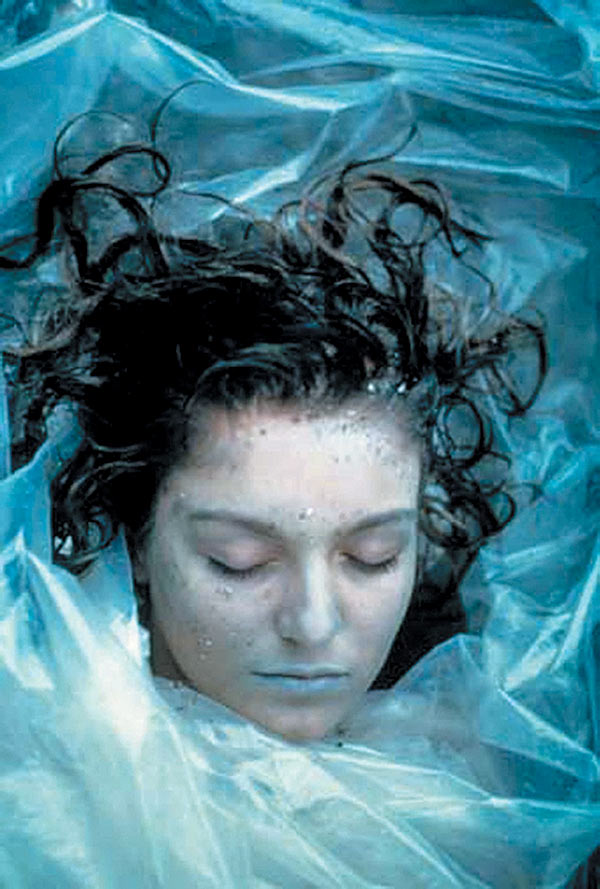 — A truck load of ridiculously large logs that appears in every episode
— A truck load of ridiculously large logs that appears in every episode
— The lady with an eye patch and a thing for drape runners suffers a concussion, reverts to high school age, develops super-human strength, and has a wild affair with a high school boy
— A character named The Log Lady. Enough said.
— A Timothy Leary-esque psychologist who dresses like a Haight-Ashbury refugee (with blue and pink eyeglass lenses) and seems to be high on LSD
— A violent drug dealer with a fixation on cleanliness
— A deaf middle-aged FBI agent (played by Lynch) who shouts most of the time but hears a gorgeous 19-year-old waitress just fine.
— All this whimsy is juxtaposed with moments of extreme darkness, and it is this duality of terrifying horror and wholesome small town quirkiness that gives the show its magic.
At its core, Twin Peaks is a soap opera — albeit one that satirizes soap operas. People have affairs, impregnate each other, plot to kill one another, and re-appear long after they are assumed dead. They are also kidnapped, drugged, and find out years later who their real parents are. The over-the-top, soap operatics come at the viewer non-stop.
The first season of Twin Peaks was a national sensation. The little-known actors became stars almost overnight. They were featured on magazine covers, as hundreds of articles were written about the show. One of the young actresses even posed for Playboy and Time magazine put Lynch on the cover. The public waited each week for another episode, and discussions of the murder case took place everywhere, from water coolers to watering holes. Naturally, the show spawned a cult following, which still exists today as numerous Twin Peaks web sites are still active, sponsoring Twin Peaks events and organizing petitions for the release of deleted scenes.
The demonic Bob, the embodiment and apparent instigator of all evil that befalls Twin Peaks, was played 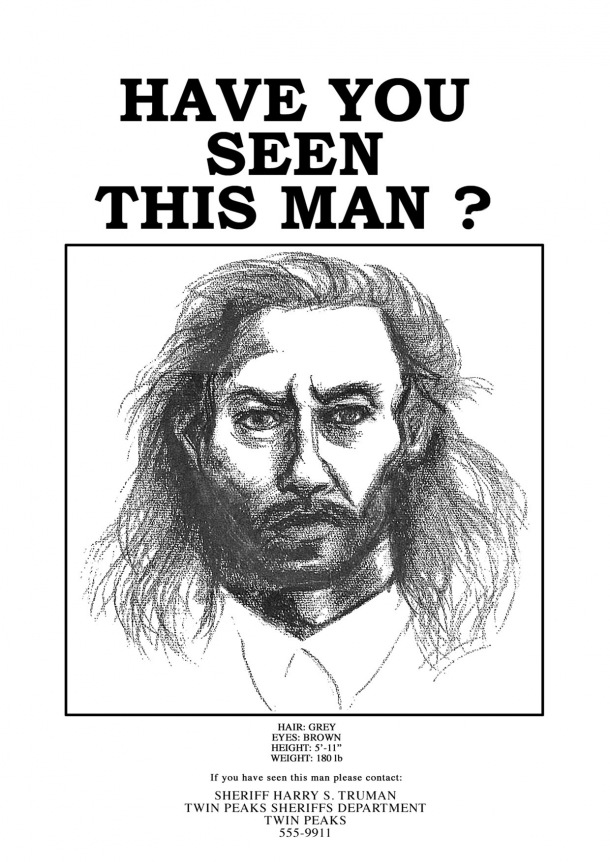 brilliantly by an unknown actor and set designer named Frank Silva. He was working on the set of Twin Peaks when Lynch lynch saw Silva’s face in a mirror and was startled by the sight. So Lynch created the part of Bob for him. The graying, long-haired actor/designer subsequently appears in mirrors in many scenes, laughing manically like Charles Manson. He also does a bit of inspired howling during flashbacks of Laura’s murder. It shows how spot-on Lynch’s instincts were. He was willing to pursue last-minute inspirations and make significant changes to the script on set. This aspect of Lynch’s working style apparently drove the cast and crew a bit crazy. Even though Silva’s Bob has very few lines and very little screen time, he is genuinely terrifying and unforgettable. Sadly, one of TV’s greatest villains was unable to parlay his success with Twin Peaks into a long and successful acting career. He died from AIDS just a couple years after the show ended.
brilliantly by an unknown actor and set designer named Frank Silva. He was working on the set of Twin Peaks when Lynch lynch saw Silva’s face in a mirror and was startled by the sight. So Lynch created the part of Bob for him. The graying, long-haired actor/designer subsequently appears in mirrors in many scenes, laughing manically like Charles Manson. He also does a bit of inspired howling during flashbacks of Laura’s murder. It shows how spot-on Lynch’s instincts were. He was willing to pursue last-minute inspirations and make significant changes to the script on set. This aspect of Lynch’s working style apparently drove the cast and crew a bit crazy. Even though Silva’s Bob has very few lines and very little screen time, he is genuinely terrifying and unforgettable. Sadly, one of TV’s greatest villains was unable to parlay his success with Twin Peaks into a long and successful acting career. He died from AIDS just a couple years after the show ended.
And Angelo Badalamenti’s soundtrack is an achievement in and of itself. Ranging from dreamy torch song jazz to twangy Duane Eddy-esque 50’s rock pastiches to eerie soundscapes and moody tone poems, the soundtrack provides the emotional palette for each scene. It also assigns recurring themes to the major characters that play whenever they walk onscreen and it plays a much more prominent role in the show than most TV or movie soundtracks.
Lynch and Frost planned to string the murder investigation along as long as possible, so they could focus on the ancillary stories of drug-running and prostitution and plots to convert the town mill into a resort. But midway through the second season the ratings started slipping, so the network pressured Lynch and Frost to solve the murder of Laura Palmer quickly. To his eternal regret, Lynch gave the network what it wanted and revealed the identity of Laura Palmer’s killer in the 9th episode.
The remaining 13 episodes followe largely unsatisfying plots lines, and clearly the show lost its mojo when the mystery of Laura Palmer’s murder was solved. To make matters worse, ABC moved the show to a different night, where it never recovered the mass audience of the first season and Twin Peaks was abruptly cancelled after the 2nd season.
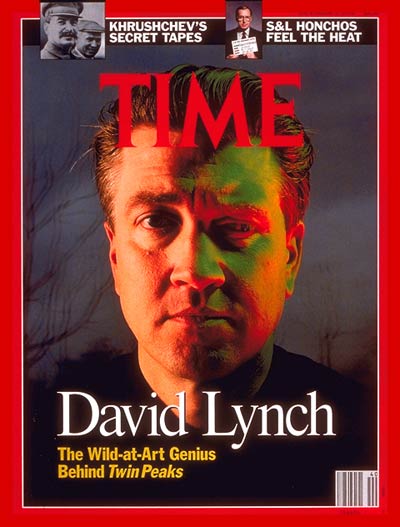 The movie Fire Walk With Me, released roughly a year after the show’s cancellation, is a Twin Peaks prequel of sorts, focusing on the week leading up to Laura Palmer’s murder. Unfortunately, where Twin Peaks was intense, Fire Walk With Me is intense but unpleasant, lacking both the TV show’s humor and charm. It’s a murder mystery minus the mystery — we already know that Laura is going to get whacked by Bob. Even Laura seems to know it.
The movie Fire Walk With Me, released roughly a year after the show’s cancellation, is a Twin Peaks prequel of sorts, focusing on the week leading up to Laura Palmer’s murder. Unfortunately, where Twin Peaks was intense, Fire Walk With Me is intense but unpleasant, lacking both the TV show’s humor and charm. It’s a murder mystery minus the mystery — we already know that Laura is going to get whacked by Bob. Even Laura seems to know it.
MacLachlan, who apparently had misgiving about being in Fire Walk with Me, makes only a brief appearance. Lara Flynn Boyle and Sherilyn Fenn, two major characters in the TV series, also declined to appear in Fire Walk with Me reportedly because they didn’t like the way the second season played out. Cameos by Kiefer Sutherland, David Bowie, Chris Isaak, and Harry Dean Stanton are inspired and amusing, but they happen aboard a sinking ship.
So, after my six-week immersion in Twin Peaks, my strong advice is this: Watch the pilot, the first season, and the first nine episodes of the 2nd season. Skip the rest. This first portion of Twin Peaks contains some of the best, most inventive television ever produced, and the show inspired a raft of quality TV dramas over the next fifteen years, with Buffy the Vampire Slayer, The X-Files, and Lost being the most obvious examples. When Leland dies weeping on the floor of an interrogation room in Agent Cooper’s arms, the mystery of Laura Palmer’s murder is essentially solved, and Twin Peaks is over, or at least it should have been.

